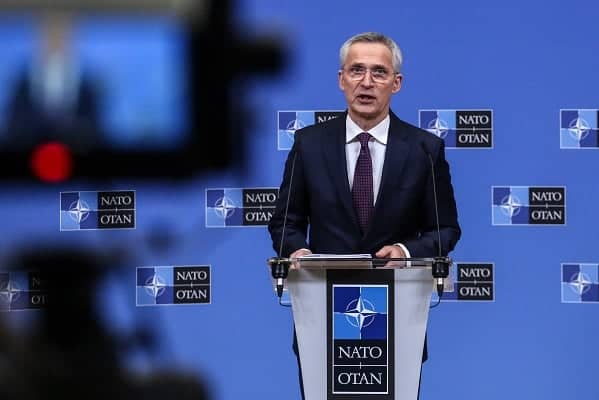Collective defence is at the heart of NATO’s founding treat which binds all members together meaning that they will all protect each other.
The collective defence means that an attack one, is an attack on all and NATO has standing forces who are always on active duty to defend against any attack.
North Atlantic Treaty which is NATO’s founding treaty in 1949 was to create a pact of mutual assistance and Article 5 is the defence component.
Dr Jamie Shea, who was a member of the International Staff of NATO for 38 years, told Forces News, “What an armed attack actually is these days is broader than it was in 1949.
Read more related news:
Senior generals double down, warning ‘an armed attack against Sweden cannot be ruled out’
UK set to send thousands troops to Europe in one of the largest NATO exercises since the Cold War
UK prepares for war ramping up defence budget as Shapps warns the ‘era of the peace dividend is over’
Top NATO commander warns civilians across Europe to prepare for an outbreak of war with Russia
“NATO invoked Article 5… for the first and, so far, only time in its history, on the 12 September, immediately after the 9/11 terrorist attacks against the United States.
“NATO, subsequently, has declared that a cyber attack, if it had a certain level of severity and really did a lot of damage, could also be considered as a case of collective defence and trigger Article 5.
“So, the spectrum is quite broad, it depends on what you call an armed attack. It can be with electrons, through cyber space as much as through tank shells and missiles.
“But at the end of the day, the determination of if it qualifies or doesn’t qualify is going to be made by the 30 countries collectively around a table of the North Atlantic Council in Brussels.”
NATO’s Article 5 states on their website, “The Parties agree that an armed attack against one or more of them in Europe or North America shall be considered an attack against them all and consequently they agree that, if such an armed attack occurs, each of them, in exercise of the right of individual or collective self-defence recognized by Article 51 of the Charter of the United Nations, will assist the Party or Parties so attacked by taking forthwith, individually and in concert with the other Parties, such action as it deems necessary, including the use of armed force, to restore and maintain the security of the North Atlantic area.
“Any such armed attack and all measures taken as a result thereof shall immediately be reported to the Security Council. Such measures shall be terminated when the Security Council has taken the measures necessary to restore and maintain international peace and security.”
This article is also complemented by Article 6, which stipulates, “For the purpose of Article 5, an armed attack on one or more of the Parties is deemed to include an armed attack:
- on the territory of any of the Parties in Europe or North America, on the Algerian Departments of France, on the territory of Turkey or on the Islands under the jurisdiction of any of the Parties in the North Atlantic area north of the Tropic of Cancer;
- on the forces, vessels, or aircraft of any of the Parties, when in or over these territories or any other area in Europe in which occupation forces of any of the Parties were stationed on the date when the Treaty entered into force or the Mediterranean Sea or the North Atlantic area north of the Tropic of Cancer.”






Leave a Comment